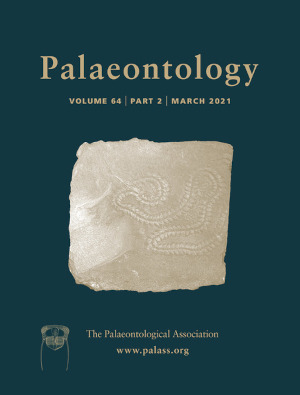Reg. Charity No. 1168330

Cladistic character matrices are routinely repurposed in analyses of morphological disparity. Unfortunately, the sampling of taxa and characters within such datasets reflects their intended application (to resolve phylogeny, rather than distinguish between phenotypes) resulting in tree shapes that often misrepresent broader taxonomic and morphological diversity. Here we use tree shape as a proxy to explore how sampling can affect perceptions of evolving morphological disparity. Through analyses of simulated and empirical data, we demonstrate that sampling can introduce biases in morphospace occupation between clades that are predicted by differences in tree symmetry and branch length distribution. Symmetrical trees with relatively long internal branches predict more expansive patterns of morphospace occupation. Conversely, asymmetrical trees with relatively short internal branches predict more compact distributions. Additionally, we find that long external branches predict greater phenotypic divergence by peripheral morphotypes. Taken together, our results caution against the uncritical repurposing of cladistic datasets in disparity analyses. However, they also demonstrate that when morphological diversity is proportionately sampled, differences in tree shape between clades can speak to genuine differences in morphospace occupation. While cladistic datasets may serve as a useful starting point, disparity datasets must attempt to achieve uniformity in lineage sampling across time and topology. Only when all potential sources of bias are accounted for can evolutionary phenomena be distinguished from artefactual signals. It must be accepted that the non-uniformity of the fossil record may preclude representative sampling and, therefore, a faithful characterization of the evolution of morphological disparity.
AcknowledgementsWe would like to thanks our colleagues in the Bristol Palaeobiology Research Group for discussion. TJS was funded by a Natural Environment Research Council (NERC) PhD Studentship within the GW4+ Doctoral Training Programme. MNP was funded by an 1851 Research Fellowship from the Royal Commission for the Exhibition of 1851. JEO’R, DP and PCJD were funded by NERC grant (NE/P013678/1), part of the Biosphere Evolution, Transitions and Resilience (BETR) programme, which is co-funded by the Natural Science Foundation of China (NSFC); PCJD is also funded by Biotechnology and Biological Sciences Research Council (BB/T012773/1; BB/N000919/1). We would also like to thank Thomas Guillerme, Sylvain Gerber, and a third, anonymous referee for their insightful comments on earlier versions of the manuscript. The final version of the manuscript was much improved by their constructive input.